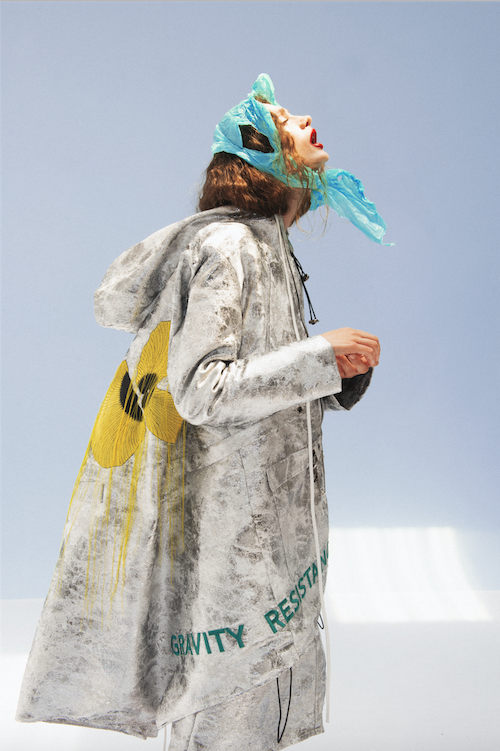Every few months, the world of fashion returns to the runway for the latest collections in Milan, Paris and New York City, before turning a collective eye toward the east to their increasingly enticing counterparts in Shanghai, Tokyo and Seoul. However, in the thousand-mile expanse between Europe and Asia, the subregion of Southeast Asia stands as a tucked-away haven of design, steeped in cultural relevance and where ancestral crafts are still continuously celebrated in both traditional and contemporary ways.
While the designers from this multicultural network of countries might not often get the global attention they deserve, the regional influence here provides a unique backbone to a truly world-class group of talents. In a bid to better understand this special destination for style, COOLS has approached three designers to share their views on working within Southeast Asia, an often-overlooked frontier in the future of design.
Patcharavipa Bodiratnangkura: Jewelry Designer – Patcharavipa / Thailand
COOLS: What do you wish more people knew about the industry in your home country?
Patcharavipa Bodiratnangkura: That we are incredibly dedicated to craftsmanship and detail. We spend a lot of time creating designs that are not only beautiful to the eye, but feel beautiful on the body. To ensure this, we are constantly thinking outside the box to come up with new ways of keeping true to these values. Thai people are very free in terms of design; we value the final product, not adhering to societal-implemented techniques. Being able to have my designs developed in Thailand is an incredible gift for me. It is a great opportunity to produce and create anything I have ever desired or dreamed of! It gives me a unique perspective in the industry, it’s magical.
COOLS: How would you describe the role of cultural heritage in Thailand’s design scene?
PB: A core value in Thai culture that I implement in every aspect of my brand, from production to sales, is respect; I treat my goldsmiths as I would my uncles. They started training at the age of 16, and this deserves the utmost respect. We constantly communicate with one another on how the jewelry should work and be handled. I have my own way of making jewelry. I approach the design of my pieces from a different perspective than them, but I always listen to their views.
The result of our different perspectives is that we come together and create a final product that fuses beauty and aesthetic with comfort and practicality – I appreciate these aspects. Another way in which I implement Thai culture in my creations is through the manipulation of elements from Thailand’s nature. We pray before cutting any of the coconut shells or Burmese woods we use, out of respect. Once a furniture maker didn’t and became paralyzed after!
COOLS: Would you say Thai media is supportive of local talents?
PB: The Thai media is incredibly supportive of young and new designers. We are representatives of Thai culture, so the media is a driving force behind our brand’s global awareness. But I think the global market is also becoming more and more active and supportive of Southeast Asia. They recognize the value in our individuality. Even if the sources of inspiration may be similar, our fittings and visions are unique and, most importantly, fresh.
COOLS: What do you wish more people knew about the industry in your home country?
PB: That we are incredibly dedicated to craftsmanship and detail. We spend a lot of time creating designs that are not only beautiful to the eye, but feel beautiful on the body. To ensure this, we are constantly thinking outside the box to come up with new ways of keeping true to these values. Thai people are very free in terms of design; we value the final product, not adhering to societal-implemented techniques.
COOLS: Where do you think the design industry in Thailand is headed in the future?
PB: What I hope for is growth—growth in respect, recognition and admiration especially for goldsmiths. They are the real makers and designers! There is so much that happens to a piece before a customer receives the final product; it’s important to value the creative process as much as the piece.
Jonathan Liang: Fashion Designer – Jonathan Liang / France & Malaysia
COOLS: How would you describe your experience as a designer in Malaysia?
Jonathan Liang: It has always been a challenge being a designer from a country where I’d constantly have to tell people that “it’s next to Thailand,” or “just above Singapore.” I think that in itself can occasionally put me at the back of the line in terms of my background, but I think this can also be channeled into a great narrative on my part – being able to introduce people to the melting-pot ethnicity within Malaysia where we can draw inspiration from a multitude of cultures.
COOLS: Would you say Malaysia media supports local talents?
JL: Yes, Malaysian media is very supportive of local talent, and there are a several programs and events specifically channeled to putting new designers in the spotlight. But, Malaysia still has some catching up to do. Designers in South Korea and Japan constantly lead the design scene around the world – you even see their influence reaching major brands in Europe. So it’s not surprising that this part of the Asia can be overlooked at times, because there’s still a lot of work for us to do. And we’re slowly getting there, with Thailand and Malaysia gaining traction within the international market as more and more locally based designers are going out and making a name for themselves.
COOLS: What do you wish more people knew about fashion in Malaysia?
JL: That designers here are more different than you might expect – not all designers produce traditional or culturally inspired outfits. There are several truly amazing designers with an eye for branding, such as Moto Guo, Joe Chia, Ezzati Amira and Han Chong of Self-Portrait. Other designers in Malaysia have definitely drawn inspiration from the colorful heritage of Malaysia, mixing ethnic influences and traditional patterns within their collections, I don’t think this has really influenced my work that much. I tend to work off my core values and morals – the social movements I believe in and the organic ideas I love, like flowers.
COOLS: Where do you think the industry in Malaysia is headed in the future?
JL: It’s definitely headed somewhere better. In this amped-up age of Internet, everyone can be anywhere at any time, and I believe that exposure will only lead the local industry to a more well-informed future!



Sheila Agatha: Fashion Designer – Sean & Sheila / Indonesia
COOLS: How would you describe your experience as a designer in Indonesia?
Sheila Agatha: I find my experience as a designer in Indonesia to be wholly satisfying – and quite fortuitous. Simply in terms of production, we have access to a rich supply of traditional fabrics and craftsmanship here; embroidery especially has played a major part in our culture for generations. But I think our cultural heritage, as Indonesians, must be seen to be relevant and inclusive for it to have the chance to perpetuate, especially with the younger generation.
At Sean & Sheila, we feel it’s important to preserve these rich and diverse cultures in Indonesia, and it’s a my goal as a designer is to continue infusing traditional Indonesian craftsmanship with modern silhouettes and contemporary aesthetics, where many of the traditional rules and practices have to be evolved, or broken, to conform to modernity and the international fashion industry.
COOLS: Would you say Indonesian media is supportive of local talents?
SA: I am grateful the Indonesian media fully supports local talent to a point where fashion enthusiasts here are able to cultivate an active interest in local – rather than international – trends and designers. In my opinion, the media here is, first and foremost, more invested in supporting local designers, especially in view of Indonesians’ inherent national pride for their own cultural heritage and thus the responsiveness to the changing landscape of the local fashion scene.
COOLS: On a global level, media has a tendency to look to designers in markets China, South Korea and Japan, instead of those like yourself in Southeast Asia. Why do you think that might be?
SA: I think that’s because ASEAN countries do not prioritize the promotion of dynamic fashion-forward culture as they do in Japan or South Korea, where they are more in tune with the international fashion scene. ASEAN fashion designers tend to be more focused on the local market since there’s a lack of recognition and difficulty in global penetration. But it’s understandable why Japan is held in such high esteem on a global level, because they have produced so many legendary designers, from Kenzo Takada and Junya Watanabe, to Yohji Yamamoto and Tsumori Chisato. South Korea also has stays very on point with current trends; the designers there tend to be more heavily focused on globalization.
COOLS: What do you wish more people knew about the fashion industry in Indonesia?
SA: That we have so much more to offer than just Batik; for example, the variety of rich cultural heritage in Songket, Ikat and Tenun – and our traditional embroidery, of course. These artistic strengths in Indonesia are surely worth exploring now and in the future.
COOLS: Where do you think the local industry is headed in the future?
SA: I believe, in terms of production, we have the potential to be just as big as China. As it is, the cost of production in China has increasingly become more and more expensive; alternatively, with the vast manpower and resources in Indonesia, international labels are starting to view us as a very viable option. We are in possession of a rich heritage of crafts, as well as having the skills to produce interesting materials unique to this part of the world. With the support of the local market, the future looks increasingly promising for Indonesian fashion to gain its recognition on the international stage.


